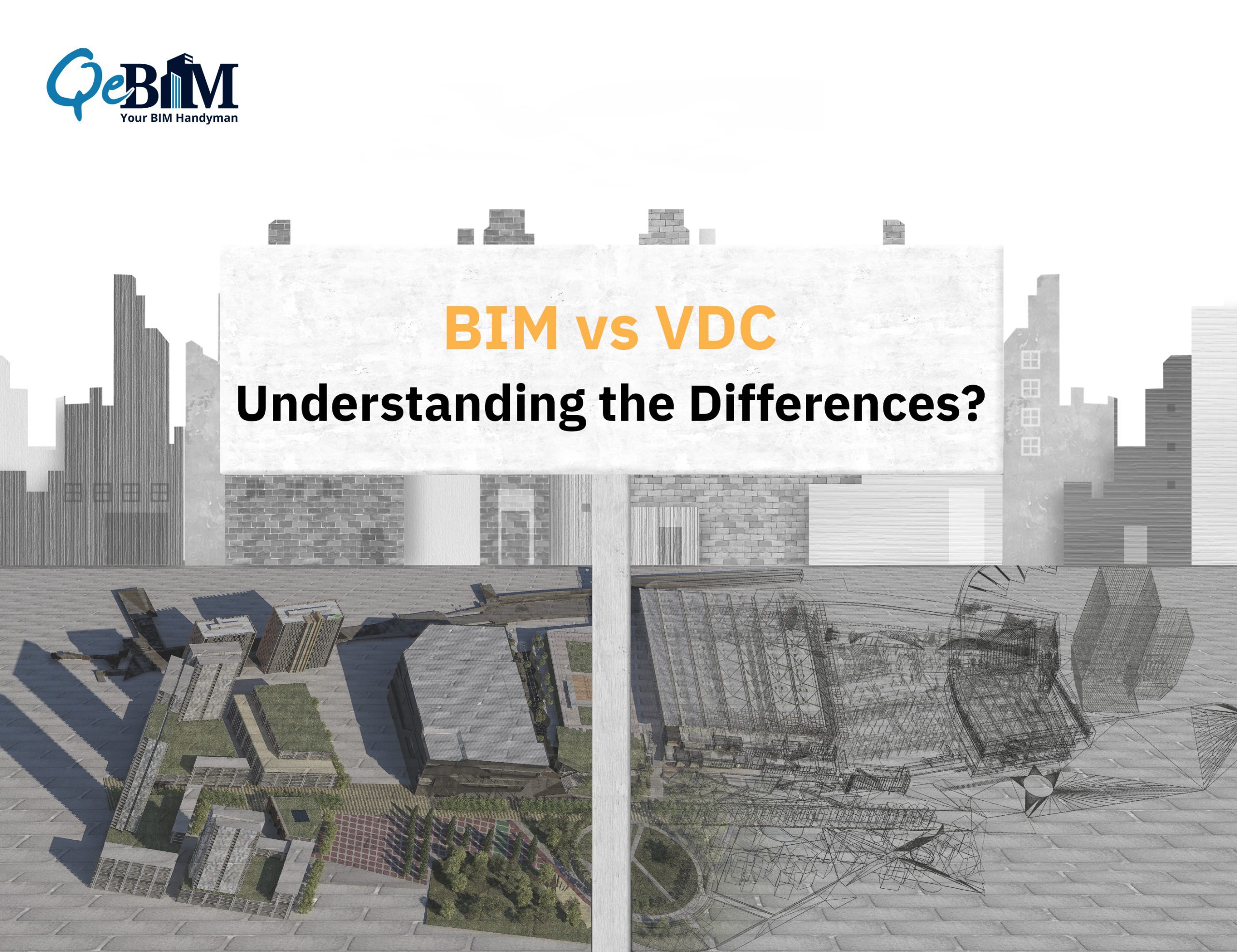BIM vs. VDC: Understanding the Differences?

The revolutionizing pace of design and technology in the AEC industry has inescapably led to a certain amount of misconceptions between the concepts of VDC and BIM along the way. As and when the new methodology, processes, or software in the construction industry are introduced, they are either the developed version of the older one or all-new with a similar intent but distinct application. BIM and VDC are examples of the same. Many construction professionals often consider these terminologies as identical, but they do hold their differences and uniqueness. Let us understand each of them, their similarities, and their differences.
What is BIM?
BIM, or Building Information Modeling, is the digital representation of any building structure’s physical and functional environment. BIM is to create a 3D rich model that allows users to design the construction elements in a virtual world to understand better the feasibility of the same in the real world and how the real-life factors will impact a building structure. BIM Coordination Services helps AEC professionals to work collaboratively on a single project making the construction process more straightforward and hassle-free with reduced- reworks and appropriate resource utilization.
The application of BIM is to create effective communication between teams where they can create a construction project with the information provided and get real-time updates on projects using cloud technology. It is like creating a master model that can be accessed by architects, engineers, and contractors at any time from anywhere to plan, design, construct, and manage buildings and infrastructure. It plays a vital role in decision-making by providing insights throughout the lifecycle of the construction.
In short, BIM Services will help in:
- Examining the design intent of the building structure beforehand
- Accessing building information from anywhere around the world
- Providing real-time updates to the team
- Clash Detection and Coordination
- A smooth communication and sharing of information
- Simulating, analyzing, and optimizing construction-relevant challenges
BIM is, moreover, a process rather than a product or a tool. It uses software to create a digital 3D model. Still, it broadly is defined as a complex, multi-staged process that gathers and compiles information from the people involved in the projects that will be used during the construction process. BIM ensures effective planning building to the operation and maintenance of any building structure. Now that you got a clear picture of BIM let’s hop on to the other concept, i.e., VDC.
What is VDC?
VDC acronyms for virtual design and construction; VDC is very similar to BIM but is the more extensive overarching methodology that uses BIM to plan construction. It is a process of developing an apt strategy for a project incorporating the right mix of technology and people. VDC concentrated more on collaboration and integrated work with building a digital equivalent for the physical infrastructure. VDC works on three aspects:
1) Virtual Construction Design
2) Working Process
3) Team Organization
VDC iterates and addresses the complexities of the construction delivery virtually before commencing on-site work. VDC framework encapsulates multiple tools and techniques like REVIT, Navisworks, BIM, etc. As we have a brief knowledge of VDC, we indeed can say that VDC and BIM are related but not the same. Let’s take a look at what ways they differ from each other.
Difference between BIM and VDC
1) BIM involves virtually building any structure information tagged to it. VDC, on the other hand, uses BIM to plan the construction process throughout the project lifecycle.
2) VDC is a broader concept that embraces BIM as a framework to work in its process, but it doesn’t always involve BIM. It can use other components in the process of prefabrication, planning, and documentation. It is a methodology that integrates the principles of BIM for efficient collaboration and communication.
3) VDC uses computer technology for a more efficient construction process, while BIM is just one of its tools that can be used in the process.
4) BIM and VDC should not be treated analogously; BIM is a much more defined process than VDC. Still, eventually, both are considered methods of planning and managing a project collaboratively.
5) A large part of VDC involves transforming from digital to physical and vice-versa, whereas BIM has no such concepts.
6) VDC is associated with handling multi-disciplinary performance models, while BIM is just a specific activity.
7) BIM is commonly utilized for large-scale construction projects for managing everything from design to operations to facilities management through a unified digital model. However, VDC is a step ahead of BIM. It enhances the efficiency of architectural design, planning, engineering, and building processes.
8) VDC mainly looks after the construction planning of the BIM model and integrates elements such as budget, cost estimation, and scheduling, i.e., BIM 4D and BIM 5D.
BIM and VDC are Redefining the Construction
BIM and VDC are often used in conjunction and are reshaping the planning, collaboration, and communication in the AEC Industry. The overall objective of both is the same, but they differ; VDC is considered a process, whereas BIM is the key technology used in this process.